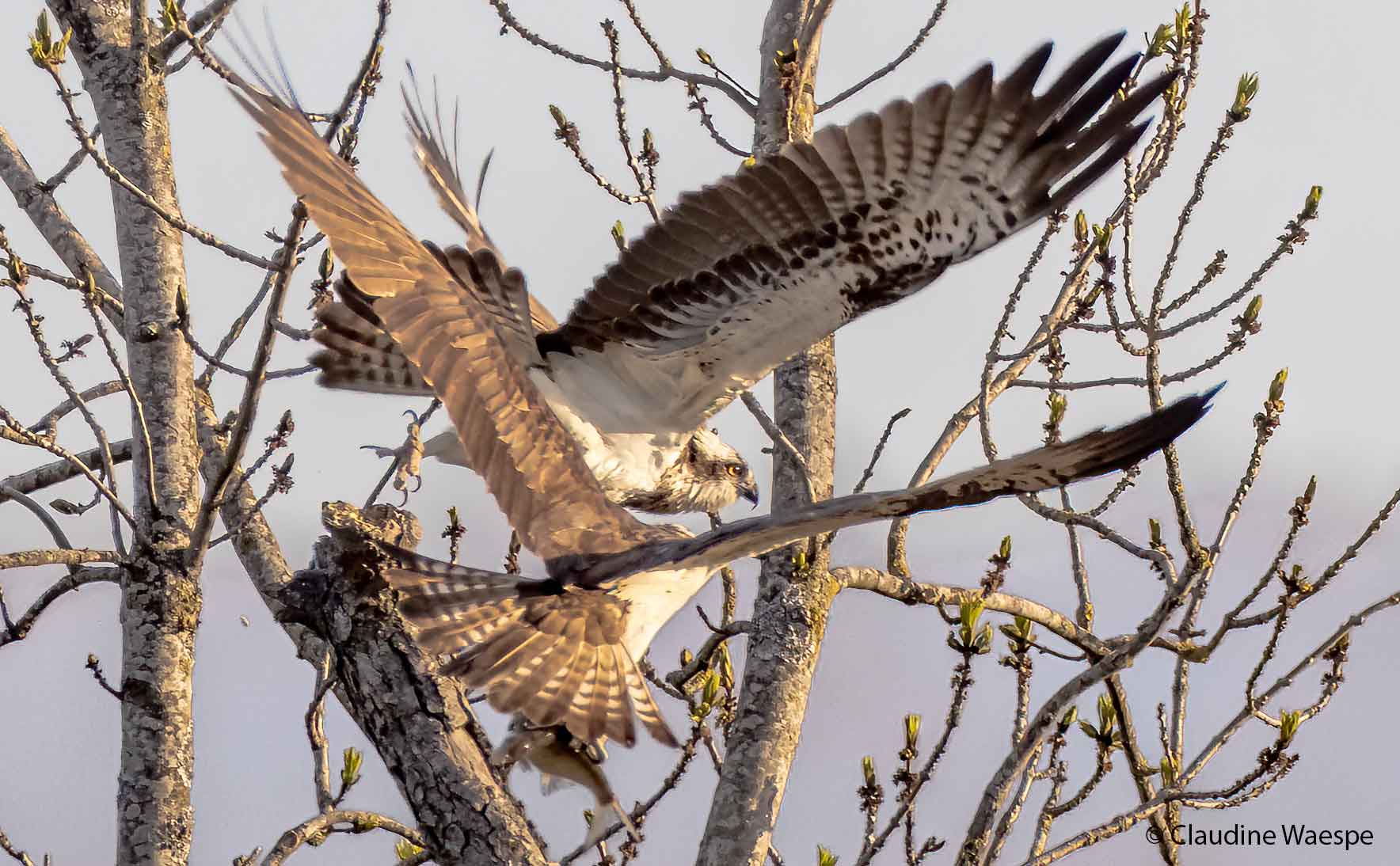We have just received the great news that Olympe (F28), the first returnee from our “class of 2020”, was spotted this morning in the Fanel Nature Reserve, at the Lake of Neuchâtel. Many thanks to Thomas Bachofner for sending us this superb photo of him looking fit and well.
Collected from a nest on a pylon in eastern Germany by Mario Firla on June 30, 2020, Olympe weighed 1,490g, so at first we weren’t sure if he was a male or female. It was only once the DNA test result came in that we knew for sure that he was a male. He was released on July 25, and migrated on August 24. Only to be observed the following day in the French department of Lozère, having covered 400 km in less than 36 hours. His return to Switzerland just 7km away from his release site shows once again how philopatric male Osprey are. Being the sixth male (that we know of) which has returned since the reintroduction project began in 2015, he is living well up to his name by setting a new record. May he set many more!














